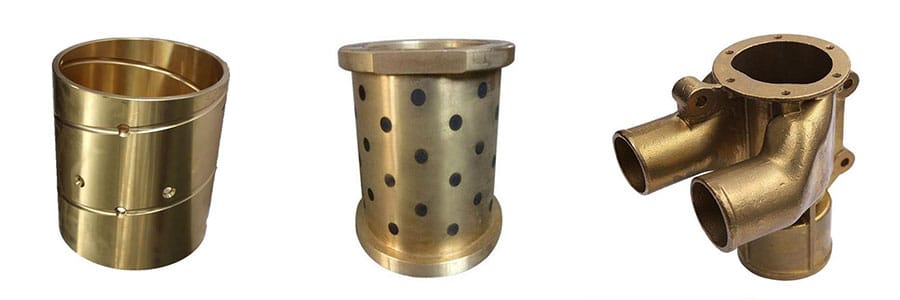Brass, for most people, is one of the best metals to cast. The reason lies in its unique properties used over the years to make almost everything from coins to musical instruments. One of the most commonly used casting brass methods is sand casting — a metal casting process involving sand for its mold material. Today, we will introduce the Sand Casting Brass.
What is Sand Casting Brass?
Sand casting is an old and versatile process that is ideal for creating low and medium-volume product castings. It is also currently one of the leading processes for making and creating brass hardware.
Sand Casting Brass, or simply Brass Casting, involves using brass as molten metal. It is preferred in commercial and residential construction due to its strong resistance to corrosion and rust. Brass is used for plumbing fittings and certain household appliances.

One factor that makes brass popular is that the brass casting temperature for its melting point is low. It means that furnaces do not need to run too high or too hot, and they can be created in small homemade furnaces.
What Are The Features of Sand Casting Brass?
Brass, for starters, is an alloy of zinc and copper. This metal contains various features and properties that make it a favorite in the sand-casting industry.
- Rust and Corrosion-resistant – Brass is corrosion-resistant due to the zinc, copper, and other elements it contains. Furthermore, brass has little to no amounts of iron, meaning iron oxide (or rust) won’t form. However, copper is capable of creating a blue-green patina when exposed to oxygen for a prolonged time.
- Good Conductivity – Brass, being a tensile metal, is easy to mold and bend into various parts. This is why it is commonly used on smaller machines. Brass is slightly more conductive than bronze, iron, and steel. This metal makes for a great conductor of energy and heat.
- Strong – As mentioned beforehand, brass is a tensile metal that can easily bend. It can be used in making valves, bearings, and moving parts since it does not break easily. Moreover, the combinations of aluminum, silicon, iron, and manganese makes brass both tear and wear-resistant
- Machinability – Being an alloy that can form quickly, brass is a sought out metal in the casting industry. Not only is brass easy to mold, but it is also capable of retaining and sustaining high strength after forming.
The Main Applications of Sand Casting Brass
Brass casting had effectively slipped its way into several industries. It turns out that brass components are extremely useful in commercial and household applications since their material has natural corrosion resistance. Brass offers several casting capabilities to create various products and applications.
- Construction Industry – Being an alloy made of copper and zinc, brass certainly has several uses and applications in the construction industry. It can provide services in areas that have low-friction requirements, such as doorknobs or locks.
- Hardware Industry – With brass’ corrosion resistance and malleability, it makes for a variety of hardware purposes and applications. It has an attractive and muted gold color that can perform both functional and decorative purposes.
- Electronics – Brass has a malleable and non-magnetic nature, making it a great choice of material for specific electrical components, typically low-friction. It could include fittings, appliance parts, tools, and more.
- Plumbing – Brass makes an excellent material for waterworks and plumbing systems.
- Other industries that use Sand Casting Brass are flow control, fire protection, pneumatics, and more.
Types of Sand Casting Brass
There are different grades or types of brass that can be used in producing final brass casting products, including red brass, yellow brass, and lead-free brass.
- Red Brass
Red Brass is an alloy family containing a high copper proportion content and less amount of zinc. Typically, the copper content reaches about 88%, zinc around 8-10%, and tin at around 2-4% only. Red brass displays a reddish hue due to its high copper concentration.
- Yellow Brass
On the other hand, Yellow Brass is a copper alloy that is made of 60-70% of copper, 30-40% of zinc, lead, and tin. The presence of high content zinc gives it a yellowish appearance.
Yellow brass is the most commonly used brass type. With its wide range of applications, several industries now incorporate yellow brass into their products or services.
- Lead-Free Brass
Over the years, the government has passed a law (Safe Drinking Water Act) that limits exposure to chemicals in drinkable water. Enter lead-free brass, which addressed issues under the said law. This brass type contains high content of copper with main alloying elements of zinc, bismuth, and tin.
The Process of Sand Casting Brass
1. Molding Process
This step includes placing the mold pattern into the sand. There is a need to create molds to produce brass products since it heavily influences the final shape and size of the casting.
2. Gating System
The gating system uses pouring cups and gates or tunnels to funnel the molten mold into the mold cavity. Remove the molding pattern from the sand after.
3. Melt and Pour
The brass needs to be melted. It will then be poured inside the mold cavity. After that, wait for it to cool and harden.
4. Finish up
The final step includes breaking open the mold and removing the newly made brass casting. The mold patterns are usually reusable, but the same cannot be said for the actual mold.
Why Choose JC Casting As A Sand Casting Brass Foundry and Supplier?
Founded in 1997, JC Casting is a trusted and well-known sand casting brass foundry and supplier that offers some of the country’s best sand casting brass services. JC Casting can help create any design and bring them to life. They have a team of highly equipped and skilled professionals that can meet all possible sand casting needs.
With decades worth of practice, experience, and knowledge under their belts, one can expect that JC Casting can meet every client’s sand casting demands and requests, no matter how complex or complicated they may be.
Sand Casting happens to be the oldest method of casting brass, and up till now, is considered one of the most well-known services. It is a cost-effective solution with several uses and purposes in different industries.
Just hop on to JC Casting’s official website to know more about their services and specialties for those interested in brass casting!
